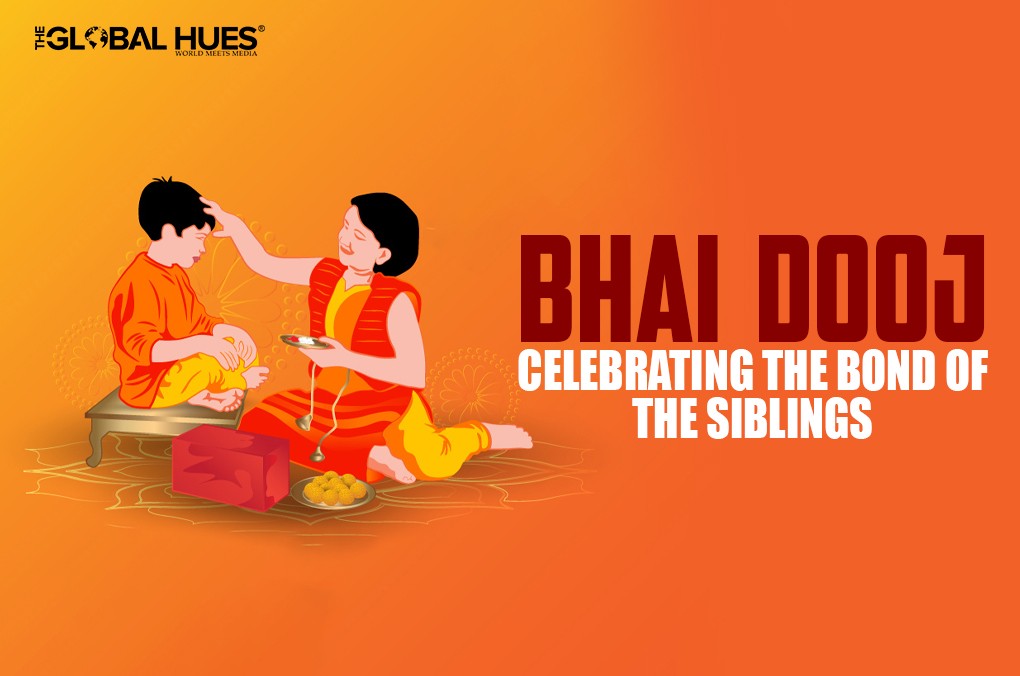India is currently in the midst of its festive season, with households bustling to prepare for celebrations. People are actively engaged in cleaning their homes, purchasing new items, and selecting gifts for their dear ones. After the Diwali celebration, the festival of Bhai Dooj or Bhaiya Dooj takes centre stage. It falls on the second day after Diwali. This day celebrates the sacred relationship between brothers and sisters. Sisters apply tilak on the forehead of their brothers. In 2023, the celebration of Bhai Dooj will be on 14th November.
The History Of Bhai Dooj
Bhai Dooj is derived from two words, ‘Bhai’ means brother and ‘Dooj’ is the second day after the emergence of the new moon. Hence, people celebrate Bhai Dooj on the second after Diwali. The origin of the festival lies in the legend that after killing the demon Narakasura, Lord Krishna visited his sister Subhadra, and she welcomed him by applying tilak on his forehead. Another folklore states that on this day, the lord of death, Yamraja, visited his sister Yami, who welcomed him with flowers and sweets and applied tilak on his forehead.
How To Perform The Pooja Ritual
The following are the essentials required to perform the pooja on Bhai Dooj:
- Puja Thali – The proper setting of the puja thali holds great importance in the festival of Bhai Dooj. People should decorate the thali with Roli/Mauli, Rice, Fruits, Chandan tikka, Flowers, Sweets, and Betel Nuts.
- Rice flour seat for brother – According to traditions, a square seat is made using rice flour for the brother to complete the ceremony. He sits on this seat for the talk ceremony.
- Mauli Thread – The thread holds immense religious significance in Hindu culture. Like Rakhi, this thread protects the brother from evil eyes and attracts positive energies.
- Lamp – Light a lamp and keep it facing the south direction.
- Dried Coconut – There is a custom of offering dry coconut to the brother after the tikka ceremony.
The ceremony starts with brothers sitting on the rice flour seat with a new handkerchief on their head. Sisters give sugar, betel leaf, black gram, betel nut, and fruits to brothers performing the aarti. After the aarti, apply roli tilak and rice on their forehead. Brothers give gifts to their sisters and take blessings from the elders.
Bhai Dooj Celebration In India
Different states celebrate Bhai Dooj differently, and below are details about it:
-
Celebrations In Punjab
The customs of Bhai Dooj in Punjab comprise the Tilak ceremony. The sisters apply tilak made of rice and saffron on their brother’s forehead to protect him from negativity.
-
Celebrations In Bihar
The celebration of Bhai Dooj in Bihar is significantly different, and they start the ritual by cursing and abusing their brothers. Afterwards, they prick their tongues as a punishment for whatever they have said about their brothers. They offer prayers to God for the wellness and happiness of their brother.
-
Celebrations In Bengal
Bhai Dooj is known as Bhai Phota in Bengal, where sisters keep fast for the well-being of their brothers. They break the fast after the aarti and tilak ceremony. The tilak is made from sandalwood paste, kajal, and ghee. The elder sibling gives rice and Durba (grass) to the younger sibling, signifying their long life.
-
Celebrations In Maharashtra
Bhai Dooj is known as Bhau Beej in Maharashtra. As a part of the celebration, sisters draw squares made with rice on the floor, and the brother sits on them. The sisters apply kumkum on their foreheads and give them sweets to eat after the Tilak ceremony. Brothers give gifts to their sisters after the ceremony.
-
Celebrations In Nepal
Bhai Dooj is known as Bhai Tihar in Nepal. “Tihar” means Tika in Hindi, and the tika comprises seven colours in Nepal. The festival happens after Dusshera in Nepal and is celebrated on the 3rd day of the Tyohar festival. Sisters pray to Lord Yamraj for their brother’s happiness and long life.
Summing Up
Bhai Dooj is celebrated two days after Diwali, and this festival commemorates the sacred relationship between the sister and brother.




